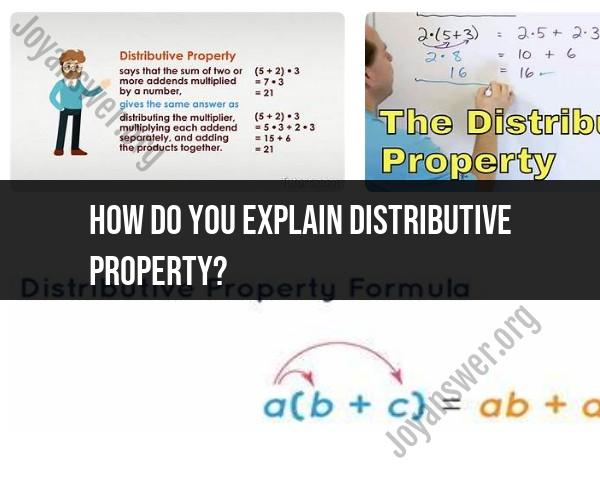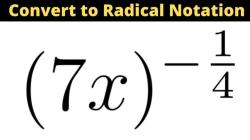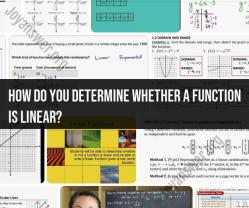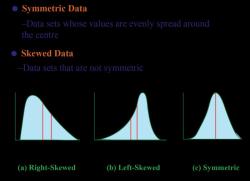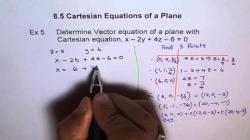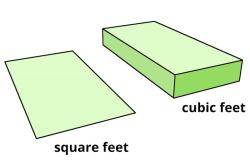How do you explain distributive property?
Explaining the distributive property can be challenging, but a comprehensive guide can help break down the concept into more understandable components. Here's a step-by-step explanation of the distributive property:
1. Introduction to the Distributive Property:
- Start by introducing the concept of the distributive property, which is a fundamental principle in mathematics.
- Explain that the distributive property allows us to combine multiplication and addition or subtraction more efficiently.
2. Define the Distributive Property:
- Provide a clear and concise definition: The distributive property states that for any numbers a, b, and c:
cssa * (b + c) = (a * b) + (a * c)
3. Visual Representation:
- Use visual aids like diagrams, number lines, or objects to represent the concept visually. For example, draw rectangles or use counters to illustrate the process.
4. Break It Down:
- Show how the distributive property breaks down a multiplication operation into simpler steps. For example:
scss3 * (2 + 4) = 3 * 2 + 3 * 4
5. Real-Life Examples:
- Relate the concept to everyday scenarios. For instance, explain how distributing objects or money among groups of people is similar to applying the distributive property.
6. Step-by-Step Explanation:
- Provide a step-by-step explanation using a simple example:
swiftLet's say we have 2 apples and 3 bananas, and we want to find the total cost. The cost of one apple is $2, and the cost of one banana is $1. Using the distributive property, we can find the total cost like this: 2 * ($2 + $1) = (2 * $2) + (2 * $1) = $4 + $2 = $6
7. Algebraic Examples:
- Introduce algebraic examples to demonstrate that the distributive property applies to variables and expressions as well. For example:
scss3 * (x + 4) = 3x + 3 * 4 = 3x + 12
8. Multiple Examples:
- Provide various examples of increasing complexity to reinforce understanding.
9. Practice Problems:
- Encourage students to practice solving problems involving the distributive property.
10. Common Mistakes:
vbnet- Highlight common mistakes students might make and explain how to avoid them. For example, clarify that the distributive property applies to both addition and subtraction.
11. Patterns and Relationships:
- Help students see patterns and relationships. For instance, show that the distributive property is related to the distributive property of exponents over multiplication (if applicable to your audience).
12. Commutative and Associative Properties:
- Relate the distributive property to the commutative and associative properties of addition and multiplication. Explain how these properties work together.
13. Encourage Questions:
- Create an open environment where students feel comfortable asking questions and seeking clarification.
14. Review and Reinforcement:
- Periodically review the concept and provide reinforcement to ensure understanding.
15. Real-World Applications:
- Share real-world applications of the distributive property in fields such as economics, physics, and engineering to show its practical relevance.
16. Practice, Practice, Practice:
- Provide plenty of practice problems and exercises to reinforce learning.
Explaining the distributive property comprehensively involves starting with simple, concrete examples and gradually moving to more abstract and complex ones. Tailor your explanation to the age and level of your audience, and use a variety of teaching tools to make the concept more accessible.
How do you explain the distributive property to others, especially in teaching?
When explaining the distributive property to others, it is important to start with a concrete example. For example, you could ask students to imagine that they have 10 candies and they want to divide them equally among 3 friends. How many candies will each friend get? You can then show them how to use the distributive property to solve this problem.
Another way to explain the distributive property is to use a visual representation. For example, you could use a rectangular area to represent the product of two numbers. The length of the rectangle represents the first number, and the width of the rectangle represents the second number. The area of the rectangle represents the product of the two numbers. To prove the distributive property, you can divide the rectangle into two smaller rectangles, one for each addend in the sum. The sum of the areas of the two smaller rectangles will be equal to the area of the original rectangle.
What are effective methods and strategies for conveying the distributive property concept?
Here are some effective methods and strategies for conveying the distributive property concept:
- Use concrete examples and visual representations. As mentioned above, concrete examples and visual representations can be very helpful for students understanding the distributive property.
- Connect the distributive property to other mathematical concepts. The distributive property is related to other mathematical concepts, such as multiplication, addition, and factoring. You can help students understand the distributive property by connecting it to these other concepts. For example, you could show students how to use the distributive property to factor polynomials.
- Provide students with opportunities to practice. The best way for students to learn the distributive property is to practice using it. You can provide students with opportunities to practice by giving them worksheets, homework assignments, and quizzes.
Can you provide teaching resources or materials for explaining the distributive property?
Here are some teaching resources or materials for explaining the distributive property:
- Concrete objects: Concrete objects, such as blocks, counters, or manipulatives, can be used to help students model the distributive property.
- Visual representations: Visual representations, such as rectangular areas or diagrams, can also be used to help students understand the distributive property.
- Worksheets and homework assignments: There are many worksheets and homework assignments available online and in textbooks that can be used to help students practice using the distributive property.
- Quizzes and tests: Quizzes and tests can be used to assess students' understanding of the distributive property.
How to make the distributive property more accessible and engaging for learners?
Here are some tips for making the distributive property more accessible and engaging for learners:
- Use real-world examples and applications. The distributive property can be used to solve many real-world problems. For example, you could show students how to use the distributive property to calculate the total cost of a group of items.
- Make the learning process fun and interactive. There are many games and activities that can be used to help students learn the distributive property. For example, you could play a game where students have to roll dice to generate multiplication problems and then solve the problems using the distributive property.
- Provide students with opportunities to work collaboratively. Students can learn a lot from each other. You can provide students with opportunities to work collaboratively on problems involving the distributive property. For example, you could have students work in pairs or small groups to solve a worksheet of problems.
How to address common challenges or misconceptions when teaching the distributive property?
Here are some common challenges or misconceptions when teaching the distributive property:
- Students may have difficulty understanding the concept of distributing a number over a sum. To help students understand this concept, you can use concrete examples and visual representations. For example, you could use blocks or counters to show students how to distribute a number over a sum.
- Students may confuse the distributive property with other mathematical concepts, such as multiplication and addition. It is important to help students understand the difference between these concepts. For example, you could show students how the distributive property is different from multiplication by showing them that the distributive property can be used to solve problems that involve multiplication and addition.
- Students may have difficulty applying the distributive property to real-world problems. To help students apply the distributive property to real-world problems, you can provide them with real-world examples and applications. For example, you could show students how to use the distributive property to calculate the total cost of a group of items.
By following these tips, you can make the distributive property more accessible and engaging for all learners.
